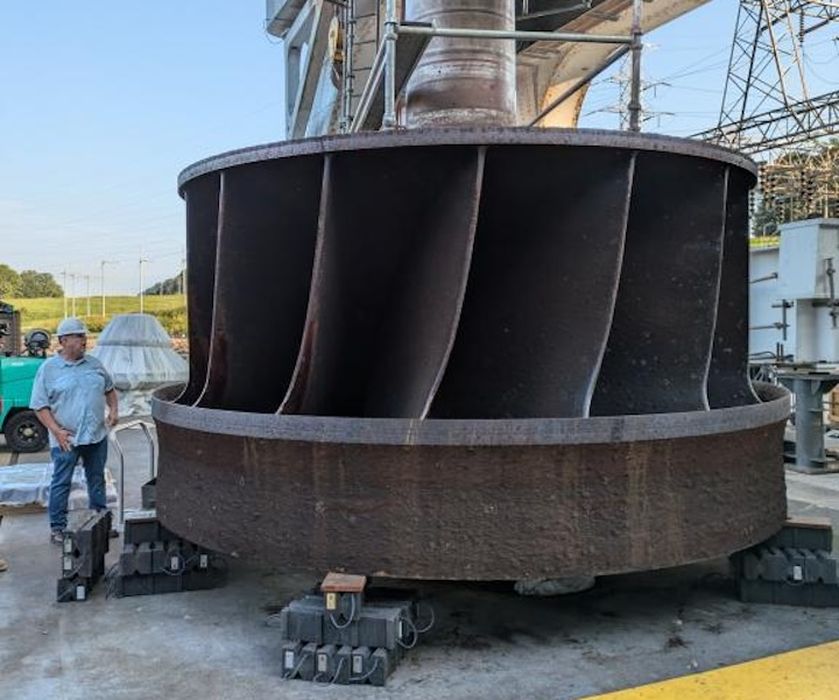
Oak Ridge National Laboratory has begun work to develop a method of 3D printing very large and complex metal objects.
The objects in question are “Runners”, which are a key component of hydroelectric generating stations. A “runner” is the rotating part that captures the motion of flowing water through a dam. This rotation is transferred through a shaft into a generator, which creates the electricity.
Runners are designed carefully to ensure they provide the maximum possible generating capacity for the specific flow characteristics of the dam in which they are to be installed. This results in complex geometries that must be custom built. Typically this is done by manual welding operators, and can take up to 18 months to complete.
Production of hydroelectric turbine runners is almost always done by manufacturers outside of the USA, meaning there can be considerable delays when runners are required during dam construction.
An even worse situation, however, occurs when a runner fails and must be replaced. Effectively the turbine is out of action for 18 months or more, which is a massive loss of clean energy.
The idea of the project is to identify a method of producing custom runners much more quickly using metal 3D print technology. The US Department of Energy provided ORNL US$15M over three years to pursue this investigation. ORNL explains:
“The project will produce runners using 3D printing, or additive manufacturing, combined with conventional tools, all produced domestically. The process will use robotic welders to deposit metal layer by layer to form the runners.”
This sounds similar to many DED 3D printing processes, but it appears there will be more to the story here, as ORNL explains how this will work:
“Central to the program is software that allows robots to produce the parts, working collectively to do AM at greater rates across larger shapes than any individual system. The envisioned system has one robot assigned to a task, such as wire arc welding, grinding, metrology and other necessary functions traditionally done by workers in large foundries and fabrication facilities. The system may have six or more robots converge on the system at the same time.”
You might be wondering about the surfaces of DED-printed metal runners. DED is effective for producing large metal objects, but the surface quality is typically quite rough due to the thick depositions. Often a second stage of CNC milling is required to smooth the surface. It’s likely that is also required for runners to ensure optimal flow of water. ORNL is also investigating the ability to apply coatings on the runners to minimize erosion and optimize flow.
One can imagine a busy factory with coordinated robots buzzing around the in-progress build.
The intent is to develop a complete system that allows all of these components to work together to produce the runners. This includes not only the robotic hardware, but also the materials, software and procedures required. The project will produce several runners for specific hydroelectric projects across the USA.
While this project is directly focused on the 3D printed production of hydroelectric runners, there will no doubt be considerable learnings that can potentially be applied to the manufacture of other large metal objects for industry. It may even be that subsequent projects are launched to prepare similar workflows and equipment for more large metal components.
Via ORNL
